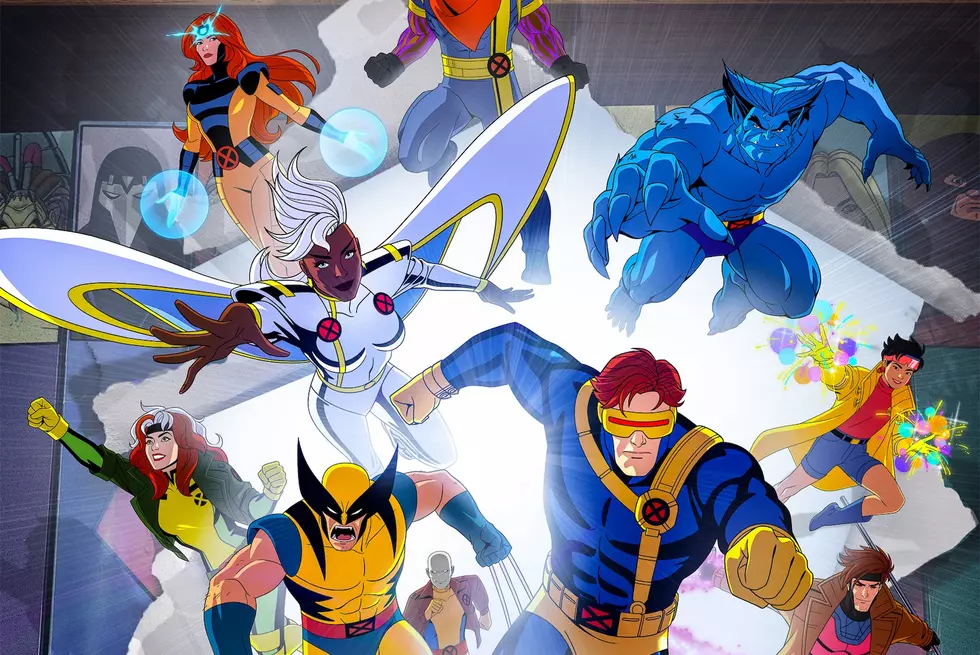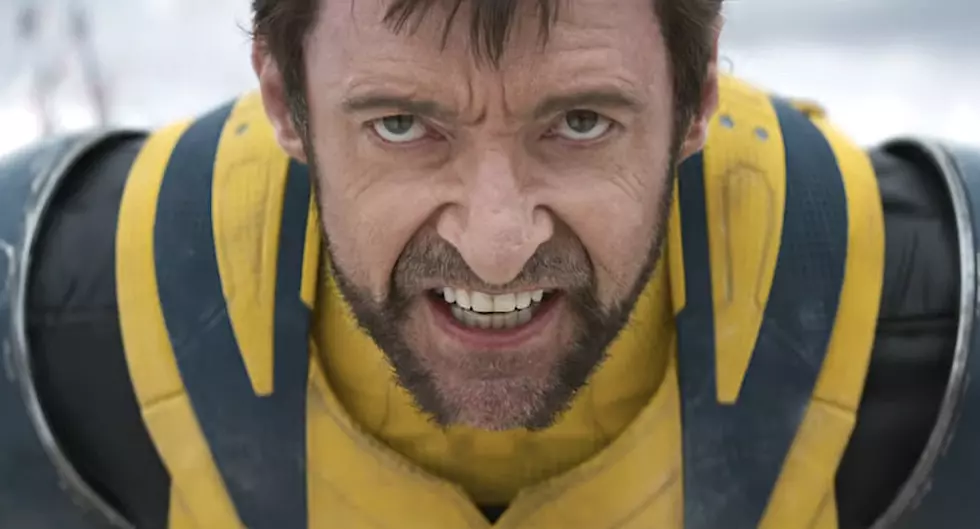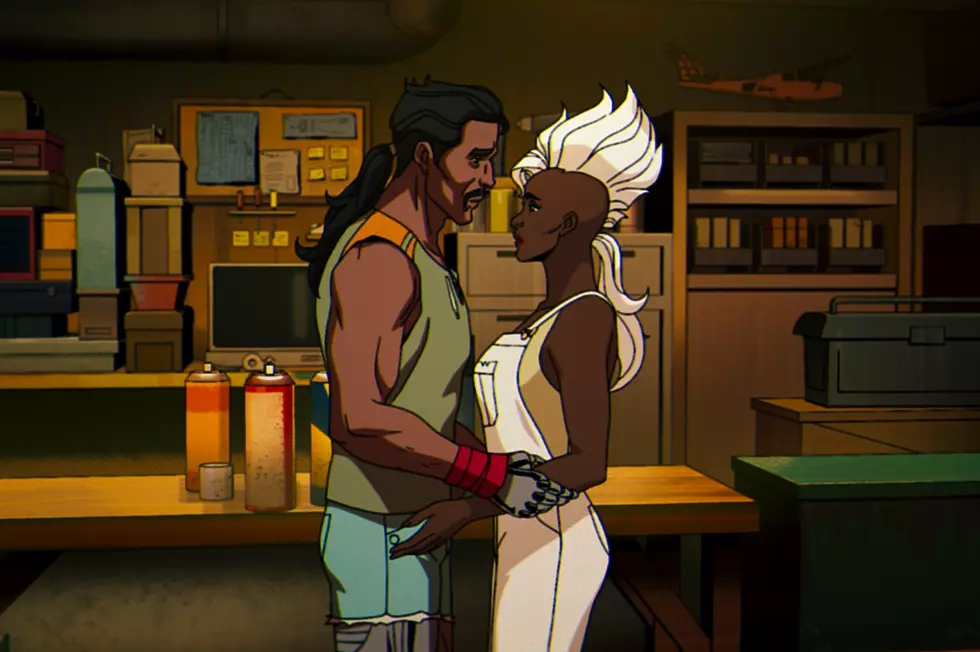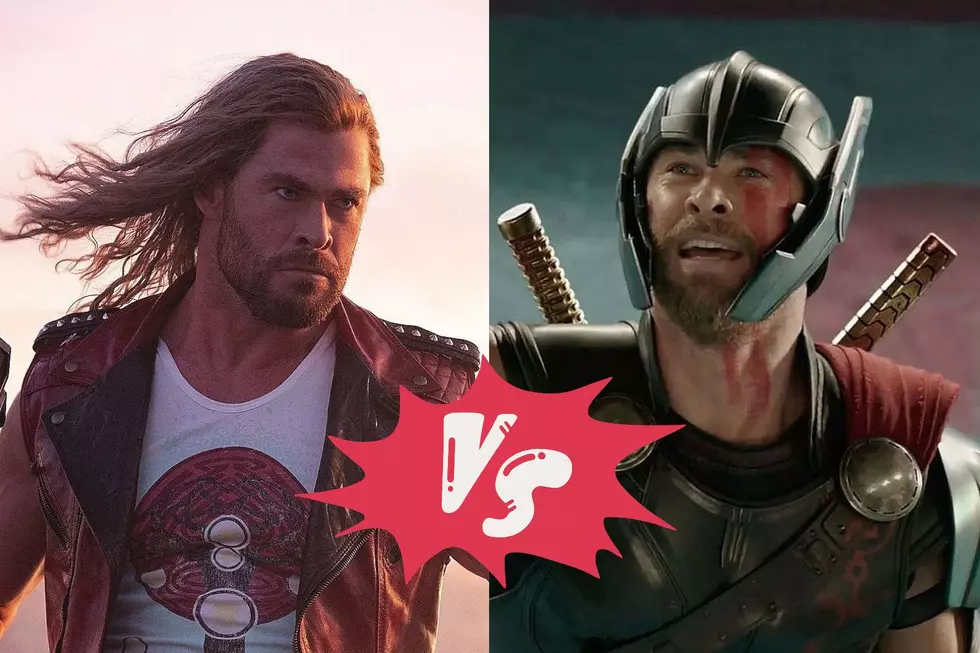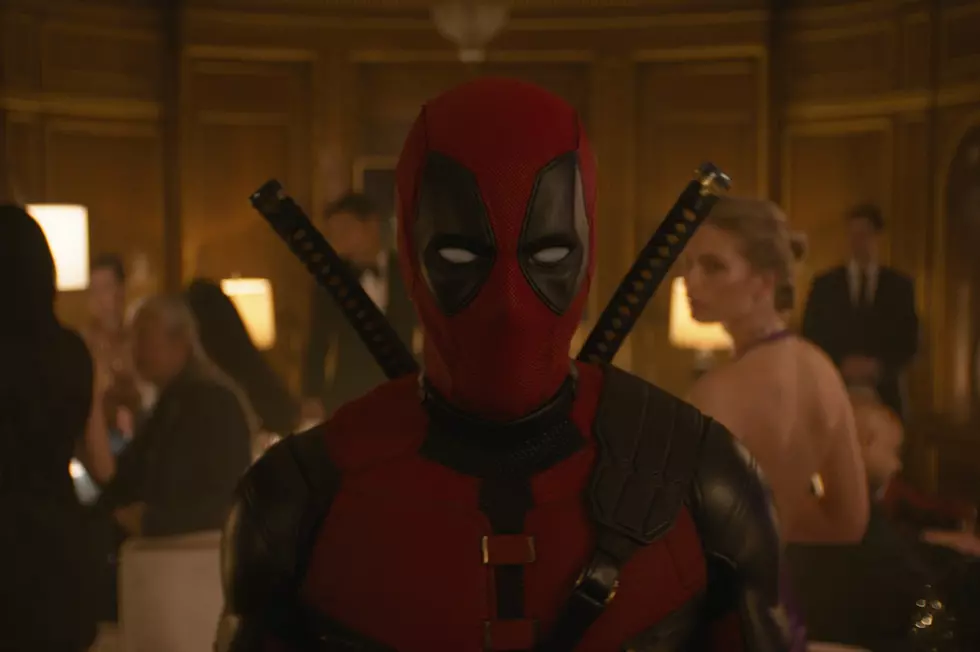
The History of the Marvel Cinematic Universe, Chapter 13: ‘Captain America: Civil War’
In The History of the Marvel Cinematic Universe, ScreenCrush editor-in-chief Matt Singer looks back at every film in the MCU to date, leading up to the premiere of Avengers: Infinity War on April 27. Previous chapters can be found here.
Chapter 13: Captain America: Civil War
Director: Anthony and Joe Russo
Writers: Christopher Markus and Stephen McFeely
Release Date: May 6, 2016
U.S. box office: $408 million
Worldwide box office: $1.15 billion
Rotten Tomatoes rating: 91 percent
Metacritic score: 75
Letterboxd average grade: 3.7
CinemaScore: A
What Holds Up
A very strong case could be made that the entirety of Captain America: Civil War exists for a single purpose: To engineer an excuse for a bunch of Marvel heroes to fight. We can argue about the relative strengths or weaknesses of the plot line screenwriters Christopher Markus and Stephen McFeely wrote (loosely based on a Marvel Comics storyline called simply Civil War) to facilitate this fight, or how the Russo brothers brought that plot line to the screen. There’s not much to quibble about in the fight itself, though. Outside of the Battle of New York sequence from the first Avengers, it is easily the action highlight of the entire Marvel Cinematic Universe. And where The Avengers only had six heroes to contend with, Civil War has a dozen.
Somehow the Russos and their design, effects, and choreography team managed to construct a sequence that honors the powers and personalities of every single one of those Avengers; each character gets a moment or two (or five) to shine. Captain America (Chris Evans) and the new Spider-Man (Tom Holland) bond over their shared hometown. Iron Man (Robert Downey Jr.) and War Machine (Don Cheadle) get to give someone a simultaneous flying uppercut. Paul Rudd transforms into Giant-Man and pretty much tops his entire solo movie in about six minutes of screen time. It’s one of the purest translations of the spirit of Marvel Comics to the screen in more than 50 years of superhero movies. If there’s anything that gives you hope that Avengers: Infinity War won’t be an overstuffed mess, it’s this scene — because this should be an overstuffed mess, and it’s not.
I already talked about the Falcon (Anthony Mackie) in my essay on Captain America: The Winter Soldier but his evolution into a full-fledged superhero is completed here, and he is far cooler in Civil War than just about any Marvel Comic. Not only can he fly with his winged jetpack, he can manipulate and mold his the wings instantly into mobile bulletproof armor. He can do flying kung fu moves. He has a badass drone called Redwing that can surveil targets or just smack them in the face when the situation demands. And he has an hilariously prickly relationship with Bucky (Sebastian Stan), basically because superhero sidekicks get very jealous of each other. (Falcon to Bucky after Spider-Man webs them both to the floor: “I hate you.”) Sam fades into the background a bit after the film introduces characters like Spider-Man and Black Panther (Chadwick Boseman) but he’s the standout in the early action sequence in Nigeria. I hope he has a lot of screen time in Infinity War.
What Doesn’t Hold Up
Zemo. Nothing about Zemo holds up. Sorry Daniel Brühl.
Throughout the whole movie, he lurks in the background, secretly pulling our heroes’ strings. It’s not until his very last scene that we learn why he’s murdered dozens of people, facilitated a massive conspiracy across multiple continents, and driven a wedge into the greatest group of heroes the Earth has ever seen aaaaaaand … it’s all because he blames the Avengers for the death of his family in Sokovia.
It’s easy to see where the writers were coming from in a thematic sense; Captain America: Civil War is fundamentally about dealing with the repercussions of these heroes’ actions. And it’s bookended by two such stories; Tony Stark confronted by the grieving mother of a Sokovia victim (Alfre Woodard), and then Zemo’s big revelation at the end of the picture. But because Zemo is treated as this mysterious wild card throughout — and because his motivation (“Tony Stark accidentally did something bad, and therefore I must destroy the Avengers”) is essentially identical to Wanda’s (Elizabeth Olsen) in Avengers: Age of Ultron — the big reveal feels anticlimactic and stale.
It’s also mighty coincidental, because Zemo tries to break up the Avengers at the exact same time (and for the exact same reason) they’re nearly destroyed by the “Sokovia Accords,” a United Nations resolution that would put the Avengers under the U.N. control. So while Zemo is off executing the most convoluted bad guy plot ever (more on that in a sec), Secretary of State Thaddeus Ross (William Hurt) almost does all of the villain’s work for him by forcing the heroes to sign these Accords and agree to government control that Cap absolutely rejects.
And that’s just the why of what he does; the how is an even bigger disaster. In order to break up the Avengers, Zemo needs Hydra’s footage of the assassination of Howard (John Slattery) and Maria Stark (Hope Davis), Tony’s parents, by Bucky in his time as Hydra’s programmable assassin, the Winter Soldier. To get this footage, Zemo must:
- Find Bucky’s old Hydra handler.
- Locate his hidden book that contains the secret code needed to activate Bucky’s Winter Soldier programming.
- Create facial prosthetics of Bucky.
- Frame Bucky for a bombing by committing it while wearing the facial prosthetics.
- Hope that Bucky, one of the most elite covert agents in human history, is found but not killed.
- Murder a United Nations psychiatrist.
- Forge the psychiatrist’s ID.
- Pose as the psychiatrist and sneak into one of the most secure facilities on the planet, where Bucky is being held.
- Simultaneously ensure the delivery of an EMP that will go off at precisely the moment he gets access to Bucky’s cell.
- Escape from one of the most secure facilities on the planet.
- Avoid detection while jetting across the globe.
- Access another highly secure location and find the crucial evidence that he can’t even be sure is still there.
Zemo found Bucky’s handler by going through the Hydra files that Black Widow (Scarlett Johansson) released to the public at the end of The Winter Soldier. But the information is incredibly conveniently selective — he knows something happened in 1991, but not what exactly, which necessitates the trip around the world to find the one tape of evidence. Fortunately — for the screenwriters, though not for Zemo — Hydra’s complete online database didn’t include this one particular video tape. (Luckily there is also “security camera footage” of a top-secret assassination that was meant to look like an accident, carried out on a deserted road in the middle of a forest.)
Zemo’s plan is ludicrously convoluted, and completely dependent on a mixture of luck, coincidence, and a bunch of stuff he probably couldn’t control and definitely couldn’t foresee. (It also basically boils down to traveling the world, and pulling off this wildly difficult break-in just to force the Winter Soldier to tell him information that he kind of already knew.) He’s a bit like the bad guy from Skyfall — another criminal mastermind whose plan doesn’t hold up to even the slightest bit of scrutiny — without Javier Bardem’s incredibly magnetic performance to at least make it slightly defensible.
Coolest Foreshadowing of Future Marvel Events
Captain America: Civil War introduces two new Marvel heroes who got their own solo films in the last 12 months: The MCU’s new Spider-Man and Black Panther. When Civil War came out, Spider-Man got more headlines and attention; Spidey is Marvel’s most famous character, this was his first time interacting with classic Marvel heroes like Captain America, and Tom Holland was an extremely appealing Peter Parker. (His scenes with Robert Downey Jr. are terrifically funny, and clearly inspired the inclusion of the Tony Stark character in Spider-Man: Homecoming.) Now that Black Panther’s come out and become the biggest domestic hit in Marvel history, it’s interesting to look back at the character’s debut.
Rewatching Civil War after Black Panther I was particularly struck by the scene where T’Challa describes what the afterlife means to a Wakandan. “In my culture,” he explains, “death is not the end. It's more of a stepping-off point. You reach out with both hands and Bast and Sekhmet, they lead you into the green veld where... you can run forever.” Then we not only see the Wakandan afterlife in Black Panther, it becomes a very important plot point in the film. I don’t know what came first; the line in Civil War or the subplot in Black Panther. Either way, it’s a simple set-up that Marvel has already paid off beautifully.
Best Marvel Easter Egg
The massive airport battle scene includes a beat where Hawkeye (Jeremy Renner, AKA the best Avenger) teams up with Ant-Man to take down Iron Man. Scott Lang shrinks down and hangs on to one of Hawkeye’s arrows as it flies through the air, then sneaks inside Tony Stark’s armor and starts ripping apart its circuits. The whole thing is a direct nod to this classic Avengers cover by artist Ed Hannigan:
When Ant-Man and Hawkeye join forces in Civil War ... somebody’s gonna get it! (The reference, I mean. Somebody’s gonna get the reference. Like me. I got it.)
Final Verdict
Time is a curious thing in the Marvel Cinematic Universe. In comics, the characters stay young forever; Peter Parker got bit by a radioactive spider in 1963 and more than a half a century of comics later, he’s maybe aged 10 years. The MCU is different. It proceeds basically in real time. Civil War came out four years after The Avengers, and the characters in the movie discuss how the Avengers have been a team at that point for four years.
The Avengers probably had a lot of adventures in that time, but moviegoers only saw two of them. And in the first of those two, they saved the world from a full-scale alien invasion, and were hailed as humanity’s saviors. Clearly there were some casualties in Sokovia, but that movie is largely about how hard the Avengers work to save every last life they possibly can. They're not cavalier about punching bad guys into buildings without any consideration of the people who might be inside them, to name one hypothetical example that is in no way a reference to Man of Steel. So from the audience’s perspective, mankind turning on the Avengers seems sudden and a little hard to swallow.
Plus, the Avengers are now being forced to accept an arrangement where they take orders from some unknown government entity two years after The Winter Soldier, where a government entity was revealed to be controlled by Hydra. Why should they sign this thing when they have first-hand knowledge of how insidious governmental oversight can be? Though you could have a philosophical debate about the issues at the heart of Civil War, the practical debate the characters are having is totally one-sided. Captain America is right.
In a sense, time is the real villain of Captain America: Civil War, not Zemo. Marvel only has so many years before their cast ages out of their roles — and so many appearances their actors are contractually obligated to make before they can quit. If the ideological conflict between Steve and Tony could unfold over several movies and many hours, if we could see all four years of Avengers’ adventures in between the first movie and Civil War, it might work. The Civil War comic was slowly developed in the pages of Captain America, Iron Man, and other comics for months; its main story played out in a seven-issue miniseries and dozens of tie-in books. Captain America: Civil War has to condense all of that into 147 minutes.
Those two and a half hours kick off Phase Three of the Marvel Cinematic Universe with some of the company’s highest highs and lowest lows. On the one hand, the airport sequence is comic-nerd perfection. When Marvel dorks (me, I’m talking about me here) describe the thrill of seeing the things they loved in their imagination come to life onscreen, that’s what they’re talk about. On the other hand, so much of the movie around that sequence is so stilted and awkward. It all boils down to a question the movie never properly answers: The Avengers would die for each other. Why would they try to kill each other?
Gallery - The Best-Dressed Characters in the Marvel Universe:
https://www.youtube.com/watch?v=zc1ETl3jsvU
More From ScreenCrush


